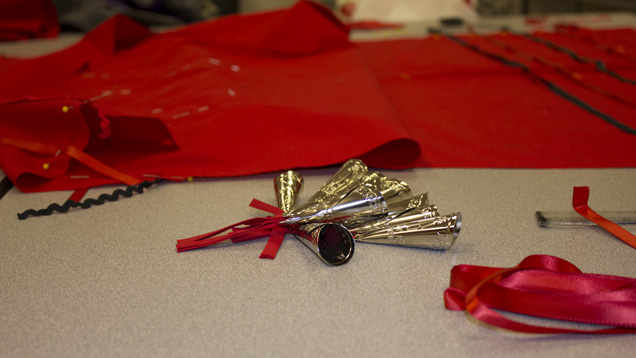Redressing the issue of murdered and missing Aboriginal women
 CREDIT: KERRA SEAY
CREDIT: KERRA SEAYA jingle dress is traditionally adorned with around 200 jingles, but the dress designed by the First Nations Centre will only have around 100. The missing jingles represent the missing and murdered women from the First Nations community.
Fanshawe is taking a stand against racialized and gendered violence in Canada through their support of the REDress Project, an initiative to raise awareness on the hundreds of murdered and missing Aboriginal women in Canada.
According to a report released by the Royal Canadian Mounted Police (RCMP), since 1980 there have been over 1,200 reported cases of missing or murdered Aboriginal women in the country. Comparing this number to other groups, this number is disproportionately high. Aboriginal women are four times more likely to be murdered than non-indigenous women, according to the same report released by the RCMP.
The REDress Project was originally founded by Canadian artist Jaime Black. According to her website, her plan is to collect 600 red dresses that can be installed in public spaces across Canada as a “visual reminder of the staggering number of women who are no longer with us.”
Leah Marshall, the sexual violence prevention advisor at Fanshawe and a member of the committee organizing this project, said the project is a great way for Fanshawe students to engage with the issues surrounding violence against women, particularly Aboriginal women, in Canada.
“It’s not just a women’s issue or an indigenous issue, it’s everyone’s issue,” Marshall said. “Students are a really powerful force for change and so we’re hoping students will engage with this and understand how big of an issue this really is.”
Christine Hannah, the student success advisor at the First Nations Centre and member of the Métis people, said the red dresses “demarcate absence”, and that seeing the dresses hanging there empty is a striking visual.
“A woman should be filling that dress, but she’s not with us anymore. It’s a haunting symbol,” Hannah said.
The First Nations Centre on campus is taking part in the project in a unique way. They are creating their own jingle dress to contribute to the installation.
A jingle dress is a traditional First Nation’s women’s powwow dance dress, often worn during healing ceremonies. Multiple rows adorned with metal cones make a jingling sound as the dancer moves.
A jingle dress typically has around 200 jingles adorned on it, but the dress the First Nations Centre is designing will only have around 100. The missing jingles on the dress is just another way the centre is acknowledging the missing and murdered women from their community.
The REDress Project display will not only show the empty dresses, but students and staff will also have the opportunity to sign a letter that will be mailed to Prime Minister Justin Trudeau and Minister of Justice Jody Wilson-Raybould, who is a member of two First Nations peoples, the Musgamagw Tsawataineuk and Laich-Kwil-Tach.
REDress Project isn’t just about native women; it is more about systemic racism and sexism that disproportionately affect Aboriginal women, something that Canadians are finally beginning to acknowledge.
Hannah said she hopes that Fanshawe students and staff are so compelled by what they see that they take action.
The REDress Project display will be presented in Forwell Hall from Nov. 30 until Dec. 4.














